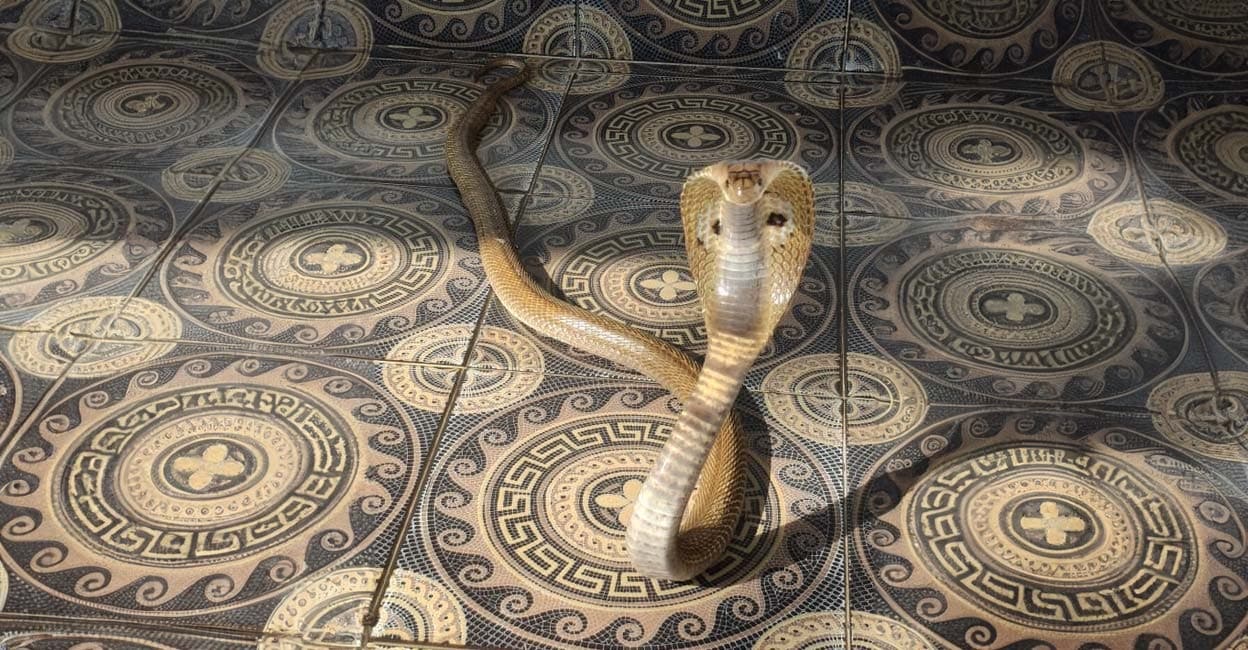Snakes are in the mood, and the expert advice is to step out of their way during this mating season. The number of snake rescue missions has gone up in the past one month, and it is expected to rise further till December.
It’s a charming period of courtship. Multiple males slithering along, catching the trail of a chemical called pheromone released by a single female. Flicking their tongues, male snakes follow the scent and in the process, lose their sense of distance and surroundings. The stronger and the smarter get to mate with the female. This element of competition turns courtship pursuits into deadly combats, spelling danger for the people.
The Forest department has rightfully raised an alarm, asking people to be cautious of snakes till December. Official figures compiled by the Forest department show that between September and October, over 4000 snakes were rescued; a marked rise from previous months when the average snake rescue number is less than 1500. In 2024, more than 42 per cent of snakes were rescued between September and December. Figures show that when compared to September 2024, there was 36 per cent increase in snakes being rescued by SARPA volunteers in Kerala this year. The officials said that while the mating period is generally between October and December, changes in rainfall patterns could influence the behaviour, a reason why a significant spike in rescue cases was recorded in September.

Snake rescuer capturing a cobra from Kottayam. Photo: Muhammad Shebin
“Since numerous male snakes compete with each other to win over one female, they will be in a heightened mood of aggression. Generally, snakes prefer to avoid conflict, come out of burrows only for food and for basking. During the mating season, nothing would stop them, once they sense the pheromone. Even those snakes which come out only at night, can be seen in many places during daytime. It is very important that people have to be wary of the fact that they can spot snakes in unusual places during this period,” said Mohammad Anwar Y, State Nodal Officer for snake rescue and Assistant Conservator of Forests.
Besides their aggressive behaviour, snakes like King Cobra raise their hood and display prowess to capture attention. Captive breeding in zoos has shown that snakes like Anaconda form mating balls as male snakes writhe around the female. The experts said that snakes like King cobra can travel up to over 10 km in search of females for mating.
Dr Jacob Alexander, former veterinarian, Thiruvananthapuram zoo and Joint Director, Animal Husbandry Department said that snakes turn dangerous because of enhanced aggression and competitiveness.
“Normally animals including snakes are fiercely protective of their territory. In pursuit of female, snakes exhibit high levels of aggression due to spike in testosterone. Stress is also a key factor because stronger males mate with the females while those who lose out become stressed, prompting them to attack anything that comes their way. Usually, snakes abandon their calm and enter a prolonged period of activity, covering greater distances and becoming aggressive. This is one reason of higher chances of spotting snakes of different species during this season,” said Dr Alexander.

A snake found inside a chicken coop in Kottayam. Photo: Special arrangement
Trained snake rescuers attest to this fact. They are spotting a good number of snakes in kitchens, on the compound and inside packed spaces. “It is during this period that snakes even cross their territory in search of probable mates. We are coming across many species during this month. We also warn the people that even if we rescue a snake, chances are higher that other snakes may be around. We usually do an extensive combing after rescuing one snake. We can’t determine the sex of the snake on the site, hence we advise caution as the house inhabitants could stumble upon more number of snakes from the same compound, which may have followed the trail of pheromone,” said Muhammad Shebin, a certified snake handler who is employed in Kerala police.

